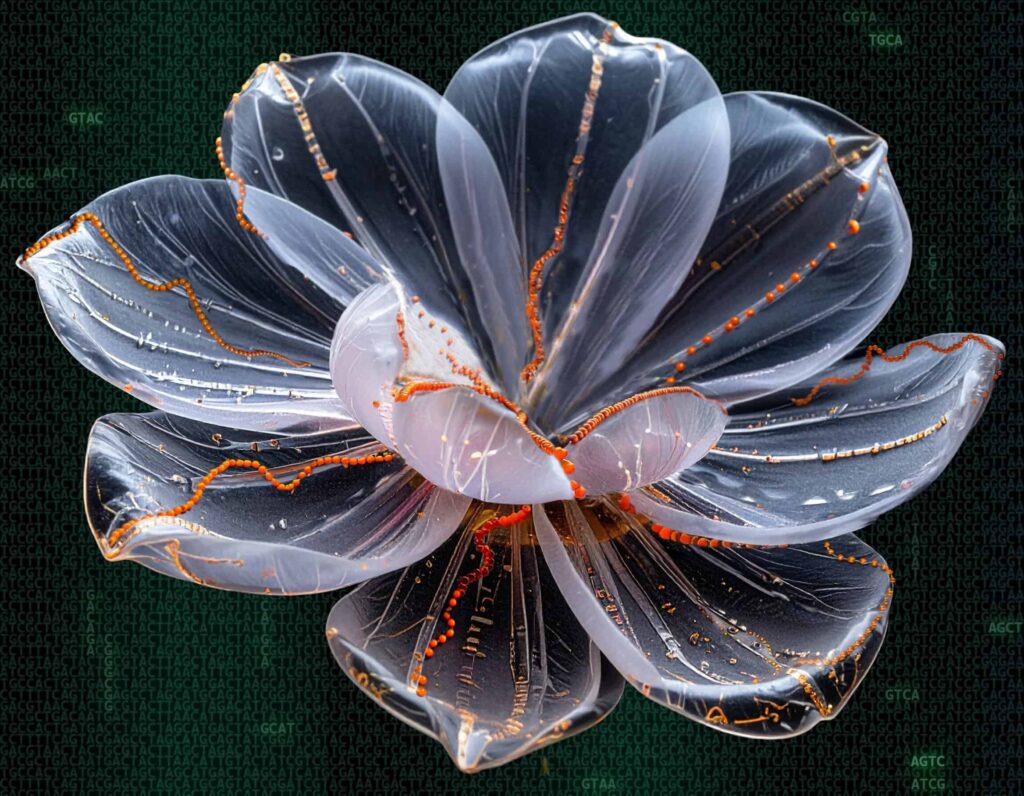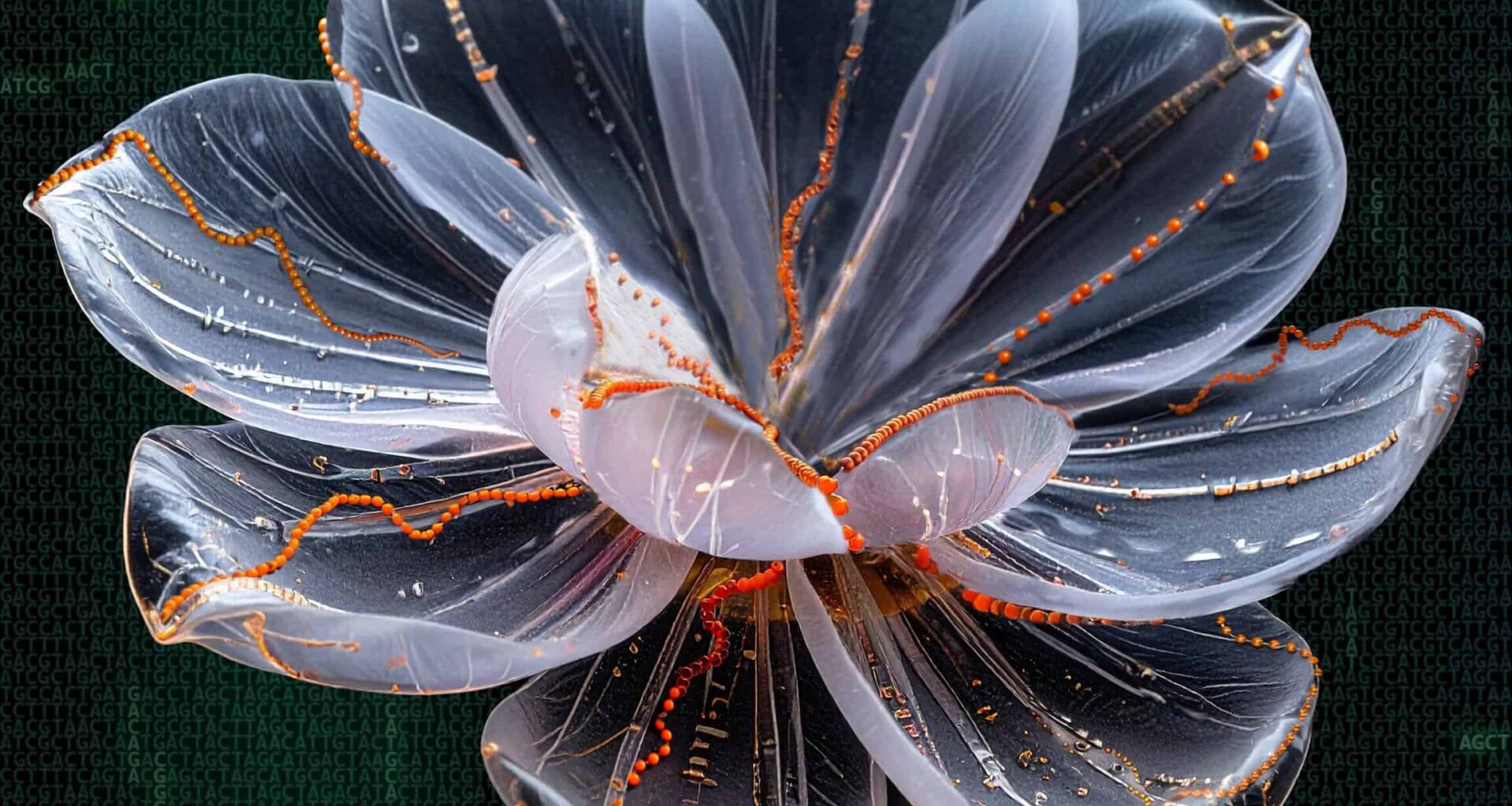 Visualization of the microscopic “DNA flowers” made by Ronit Freeman in the Freeman Lab at UNC. Credit: Justin Hill, Philip Rosenberg, and Ronit Freeman
Visualization of the microscopic “DNA flowers” made by Ronit Freeman in the Freeman Lab at UNC. Credit: Justin Hill, Philip Rosenberg, and Ronit Freeman
They look like small, flowers, curling and unfolding with changes around them. But in reality, they’re microscopic robots made of DNA and metal that move in response to their environment.
In a study published in Nature Nanotechnology by a team at the University of North Carolina at Chapel Hill, scientists report creating “DNA flowers,” tiny hybrid crystals that can change shape within seconds. The researchers wove DNA strands into cobalt phosphate to build each flower, giving it the ability to bend, shrink, and open when acidity changes.
Mimicking Life
Living organisms constantly reshape themselves. Our molecules assemble and disassemble to adapt to changing conditions. Drawing on that idea, the UNC researchers set out to build materials that could mimic this ability. In essence, they wanted to use DNA to create structures that respond to their environment without the need for motors or electronic controls.
Using an enzyme called terminal deoxynucleotidyl transferase, the team strung together long chains of DNA in the presence of cobalt ions. As the DNA grew, it co-crystallized with cobalt pyrophosphate, forming three-dimensional flower-like structures. The process, remarkably, happened in a single reaction flask.
The DNA inside each flower acts like a built-in control system. In normal conditions, the petals stay open. But when the environment turns more acidic, parts of the DNA fold into special four-stranded shapes called i-motifs, which make the petals close. When the surroundings return to normal, the petals open again. This opening and closing can happen many times without harming the structure.
“People would love to have smart capsules that would automatically activate medication when it detects disease and stops when it is healed,” said Dr. Ronit Freeman, the study’s senior author and director of the Freeman Lab at UNC, in a statement. “In principle, this could be possible with our shapeshifting materials.”
“In the future, swallowable or implantable shape-changing flowers could be designed to deliver a targeted dose of drugs, perform a biopsy, or clear a blood clot.”
Numerous Applications
Under a microscope, the nanoflowers are remarkably dynamic. When the surrounding pH changes, the petals shrink to almost half their size in less than a minute, then expanded again when conditions normalized.
By altering the sequence and layering of DNA blocks, the team could program different kinds of movement—shrinking, bending, or both. For instance, flowers made from alternating layers of inert thymine DNA (T-blocks) and responsive cytosine DNA (C-blocks) folded their petals like closing buds. Others made in reverse order simply contracted inward. The researchers even built triblock versions that combined both motions at once.
“We take inspiration from nature’s designs, like blooming flowers or growing tissue, and translate them into technology that could one day think, move, and adapt on its own,” she said.
That precision lets the crystals act like tiny machines, able to turn chemical changes into movement. Computer models revealed that scientists could adjust and control their movement just like a mechanical system.
The technology is still in its infancy, but its implications are immense. The researchers envision swallowable or implantable versions that could detect disease markers and release drugs precisely where needed. For instance, cancerous tumors create an acidic environment, so this could lead to targeted therapies. Another application is cleaning polluted water. The flowers can act like microscopic filters that activate only when toxins are present.
The DNA flowers aren’t alive, but they point toward a future where the line between biology and machines becomes increasingly thin.

